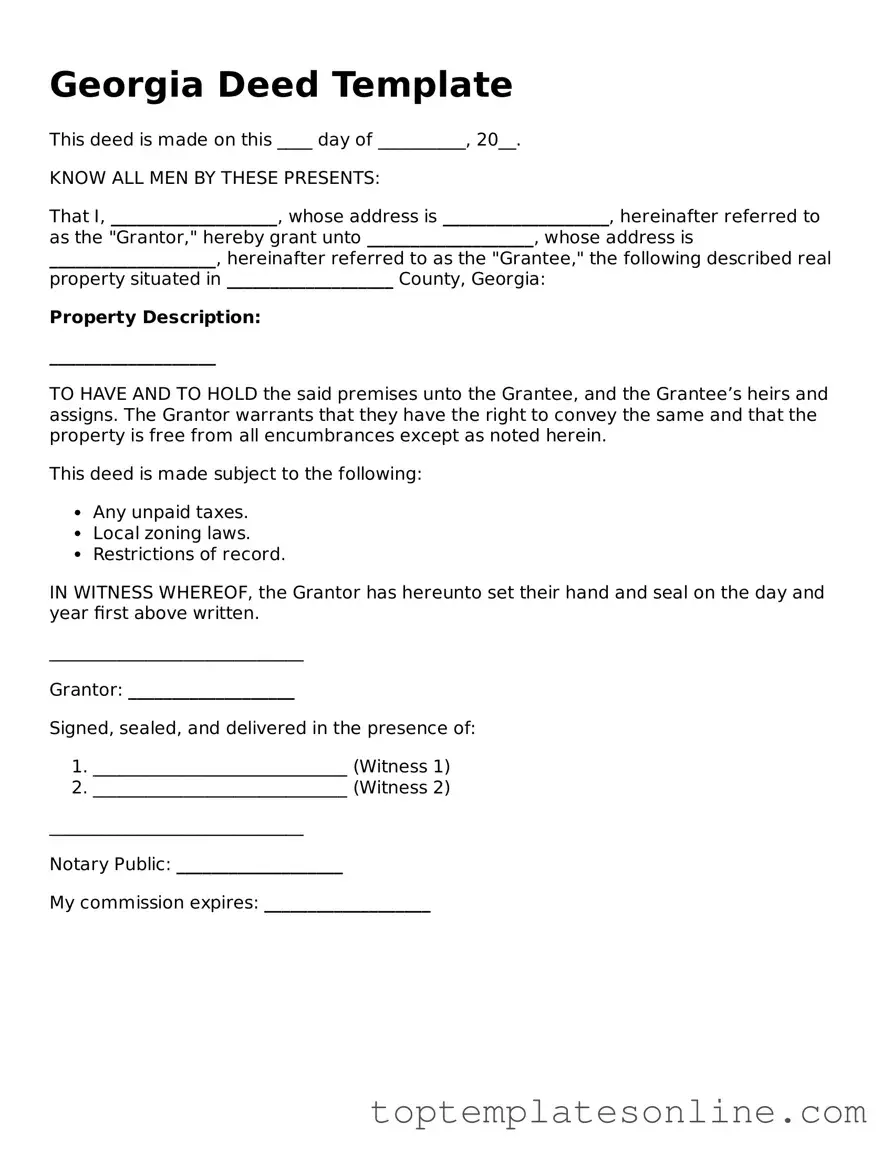When it comes to transferring property in Georgia, the Georgia Deed form plays a crucial role in ensuring that the transaction is legally recognized and binding. This form is essential for documenting the transfer of ownership from one party to another, whether it involves selling a home, gifting property, or transferring assets within a family. It includes important details such as the names of the grantor and grantee, a description of the property being transferred, and the date of the transaction. Additionally, the form may require notarization to validate the signatures, providing an extra layer of security. Understanding the components of the Georgia Deed form can help individuals navigate the property transfer process with confidence, ensuring that all necessary information is accurately captured and that the rights of both parties are protected. Whether you are a buyer, seller, or simply curious about property transactions, familiarizing yourself with this form is a step toward making informed decisions in real estate dealings.
